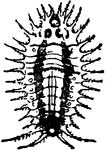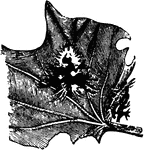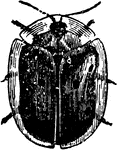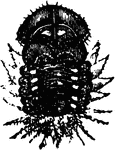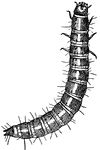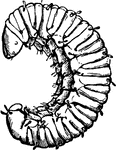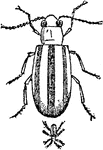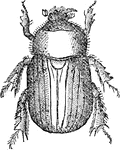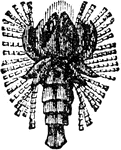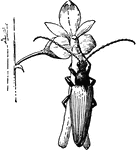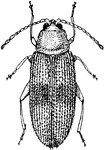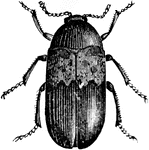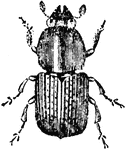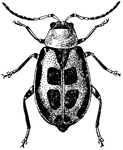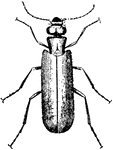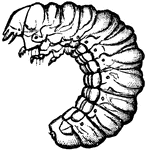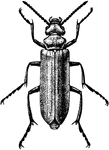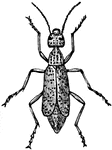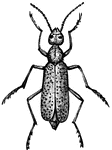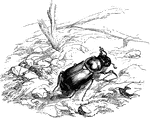This ClipArt gallery includes 561 illustrations of insects from the order Coleoptera, including beetles, weevils, borers, carabus, scarabs, and ladybugs (also known as ladybirds or lady beetles).
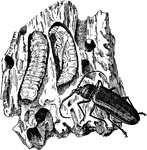
Beetle
Beetles are the group of insects with the largest number of known species. The general anatomy of beetles…

Beetle Borer
Pictured is a beetle borer and its work. The larva bores in the young wood of raspberry and blackberry.

Carpet Beetle Stages
"d, Carpet beetle (Anthrenus scrophulariae) with larva a, b, and pupa, c." -Parker, 1900
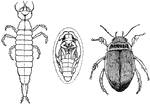
Water Beetle Stages
"Larva, pupa, and adult respectively of water-beetle (Dytiscus marginalis)." -Thomson, 1916

Bacon Beetle (Dermestes Lardarius)
"They eat bacon, skins, and also attack each other. The perfect insect does no damage. Insects in this…
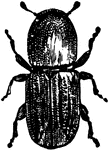
Bark Beetle
A bark beetle is one of approximately 220 genera with 6,000 species of beetles in the subfamily Scolytinae.…

Blackspotted Pliers Support Beetle
"The Leptura Mordax, or Rhagium Mordax of Europe, three-fourths of an inch long,…
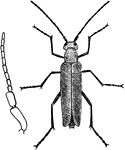
Blister Beetle
"Macrobasis unicolor: female beetle at right; male antenna at left." -Department of Agriculture, 1899

Blister Beetle
Beetles (Coleoptera) in the family Meloidae are commonly known as blister beetles, after their defensive…
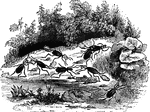
Bombadier Beetle
"The bombadier beetle has a large oval abdomen, which secretes a caustic fluid. They live in societies,…
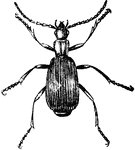
Bombardier Beetle
"These congregate together under stones, and when disturbed discharge a caustic fluid of an extremely…
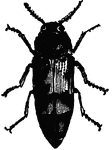
Buprestis (Cyria) Imperialis
"It is very rare in northern climates. It may be found on birch trees. In the hottest parts of the world…
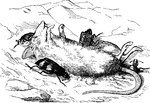
Burying Beetles
"The Burying Beetles are prompted by their insect to bury any small animals or pieces of carrion as…

Pupa of Calosoma Auropunctata
"A very beautiful specimen of this tribe may be found in June on oak-tees."

Campylocnemis Schroeteri
"An Australian insect, of a bright black, which attains to more than an inch and three quarters in length,…
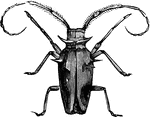
Capricorn Beetle
"The insects of this tribe, called Capricorn Beetles and distributed throughout most parts…

Carabus Canaliculatus
"Abounds in trees and gardens. When it is touched it disgorges a black and acrid saliva, and ejects…
